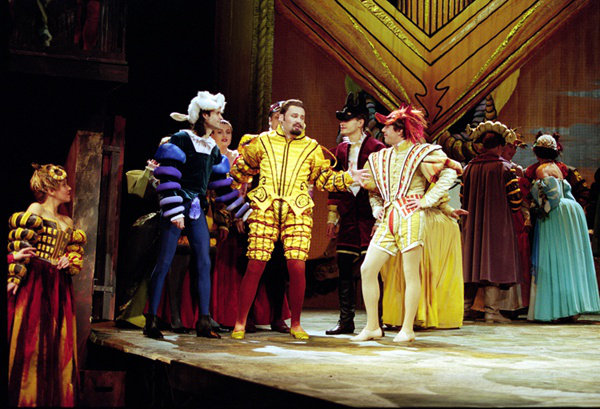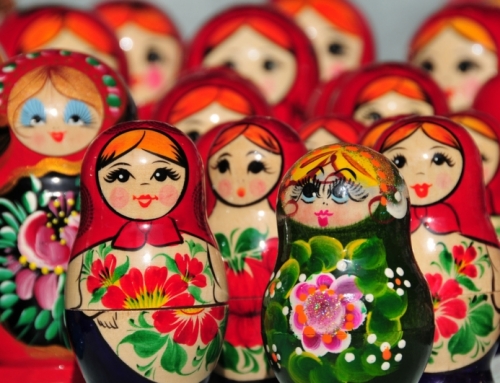The seeds of distinctively national art music in Russia are usually dated from the first half of the 19th century. The performance of the opera “A Life for the Tsar” (1836), by Mikhail GLINKA , is usually cited as the turning point for Russian music (Russia’s national anthem is taken from this opera). In this historical opera, as well as in his subsequent opera “Ruslan and Ludmila” (1842), the orchestral fantasy Kamarinskaya (1848), and numerous songs, Glinka successfully fused the typical melodies, harmonies, and rhythms of Russian folk music with the forms and techniques of Italian opera
Creating an eclectic but unmistakably national idiom.
Glinka’s younger contemporary, Alexander DARGOMYZHSKY, is best known for his influence on subsequent nationalist composers through his posthumously produced opera “The Stone Guest “(1872), a radical attempt to promote musical realism by abandoning the forms and conventions of traditional opera in favor of continuous recitative.
The FIVE, or the Mighty Five, is the label given to a group of Russian composers that formed during the 1860s. Supported by the influential critic Vladimir Stasov (1824-1906), the Five — Mily BALAKIREV, Aleksandr BORODIN , Cesar CUI, Modest MUSORGSKY , and Nikolai RIMSKY-KORSAKOV — sought to legitimize the goals and achievements of nationalistic music and to oppose the dominance of Western musical influences. Although linked by common propagandistic aims and by the characteristic absence of formal musical education, the composers wrote in differing styles.
The most lasting musical achievements were made by Borodin, Mussorgsky, and Nikolai RIMSKY-KORSAKOV . Borodin is noted for his use of Russian orientalisms in works such as In the Steppes of Central Asia (1880) and his opera Prince Igor. In his numerous operas on historical and fairy-tale subjects, as well as in the well-known symphonic suite Scheherazade (1891), Rimsky-Korsakov exploited the unusual modal tendencies of Russian folk music, and his orchestration was colorful and effective. Modest MUSORGSKY was undoubtedly the most original composer of the Five. Continuing Dargomyzhsky’s search for musical realism, he combined an instinctive flair for the nuances of folk music with flexible, textually motivated rhythmic practices and unusual harmonic juxtapositions in his many songs, his operatic masterpiece “Boris Godunov” (1869-72), and his suite for piano Pictures at an Exhibition (1874). Although he was misunderstood by many of his contemporaries, Mussorgsky’s legacy has been profoundly important for music in the 20th century.
Peter Ilich TCHAIKOVSKY was one of the first graduates of the former and subsequently taught at the latter. Without rejecting his national heritage Tchaikovsky evolved a more cosmopolitan, romantic, yet highly personal style that won him widespread international popularity. Many of his works–including the six symphonies, the operas Eugene Onegin (1879) and The Queen of Spades (1890), the ballets Swan Lake (1877), Sleeping Beauty (1890) and The Nutcracker (1892)–established themselves as repertory classics.
After the October revolution in 1917, many composers and performers chose to leave Russia. Among those who pursued successful careers in the West were Stravinsky, Rachmaninoff, Nikolai Medtner (1880-1951), Nikolay and Aleksandr TCHEREPNIN, and Serge KOUSSEVITZKY.
The unexpected official denunciation (1936) of the highly successful opera Lady Macbeth of the Mtsensk District by Dmitry SHOSTAKOVICH (1932) was the first explicit application of socialist realism to music. Recognizing music to be a powerful weapon in the ideological struggle, this ambiguous doctrine called for music with a “socialist” content, expressed in a musical language that ordinary people could understand. The formula effectively banned the modernistic directions characteristic of contemporary Western music and fostered conservative and readily accessible styles. Shostakovich, one of the first generation of Soviet composers, had achieved early success with his First Symphony (1925) and subsequent works and was able to reestablish himself spectacularly with his Fifth Symphony (1937). Mildly dissonant counterpoint, march rhythms, and sensitive orchestration became the hallmarks not only of Shostakovich’s style but of that of many other Soviet composers as well.
Composers who reached artistic maturity during the 1930s and ’40s included Aram KHATCHATURIAN, Dmitri KABALEVSKY , Yuri Shaporin (1887-1966), and Vissarion Shebalin (1902-63).






